ROM computer "Apollo 3" found in the trash
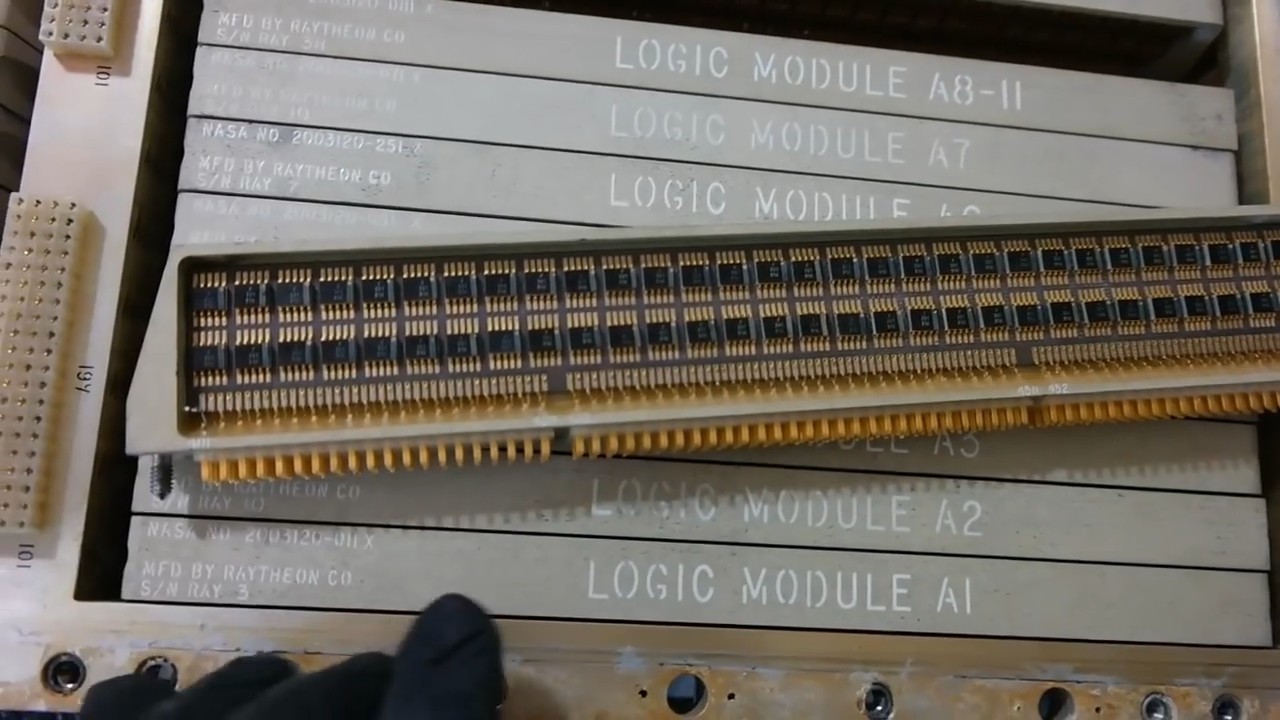
Logic modules of the Apollo spacecraft computer. Shot from video: Francois Rautenbach
On August 25, 1966, the command and service compartments of the Apollo-3 ship (Apollo Command Module) were installed on the Saturn-1B launch vehicle and sent to the AS-202 unmanned test mission at an altitude of 1,136 km. This launch was the third test launch of the Saturn-1B after AS-201 and AS-203. But he became the first flight of the ship with installed control systems and orientation. The first time AGC on-board computer (Apollo Guidance Computer) rose into the sky. These tests were supposed to prove that the Apollo spacecraft was capable of delivering people to the moon and returning them back.
Software for subsequent missions exists and is published on Github , the on-board computer emulator runs even in a browser . But the hardware and software of the first experimental missions are poorly understood . For a long time, some of the equipment was generally considered lost.

The launch of AS-201 from the launch site LC-34, February 26, 1966 (the launch of AS-202 took place from the same launch site after 180 days). Photo: NASA
')
Fortunately, now something has finally been found. South African engineer Francois Rautenbach discovered memory modules from the first ever on-board computer for automatic control and orientation in space in the garbage. That same computer installed on the American ship, which we now call the Apollo 3.
The engineer carefully studied the find and counted the data from the memory with the help of an ingenious design from a variety of relays and an oscilloscope.
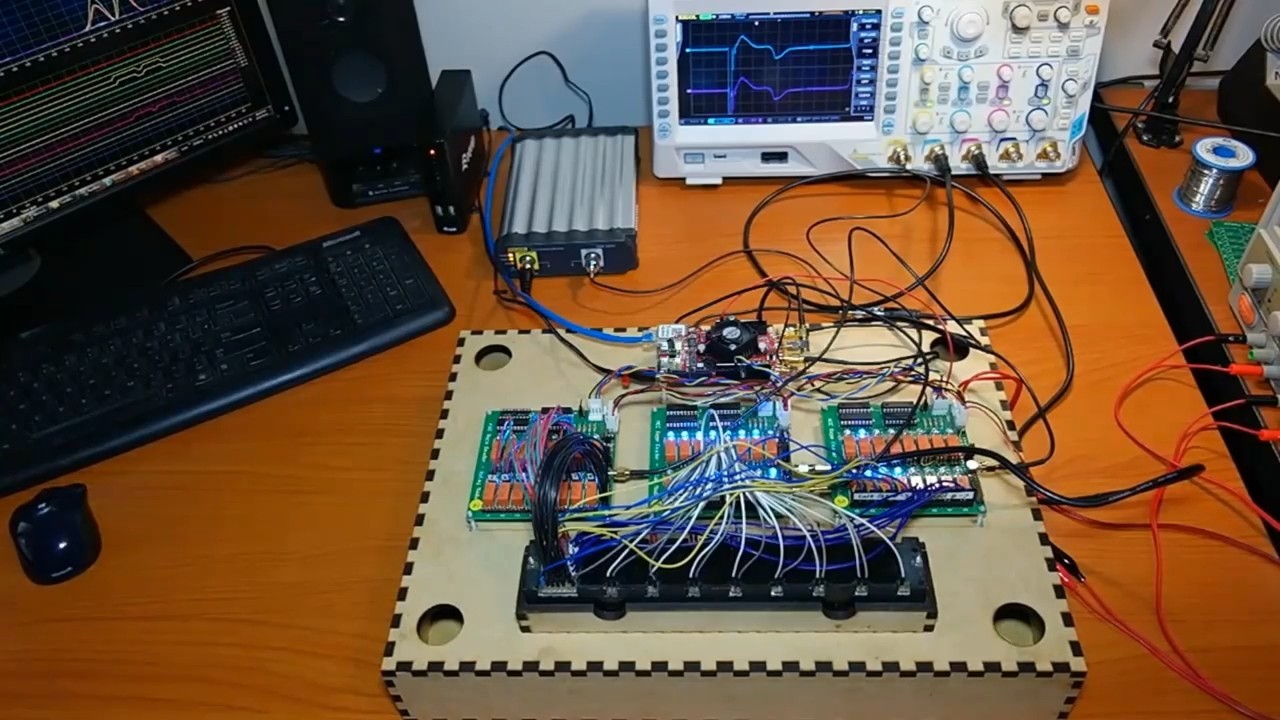
Read memory from AGC module. Shot from video: Francois Rautenbach
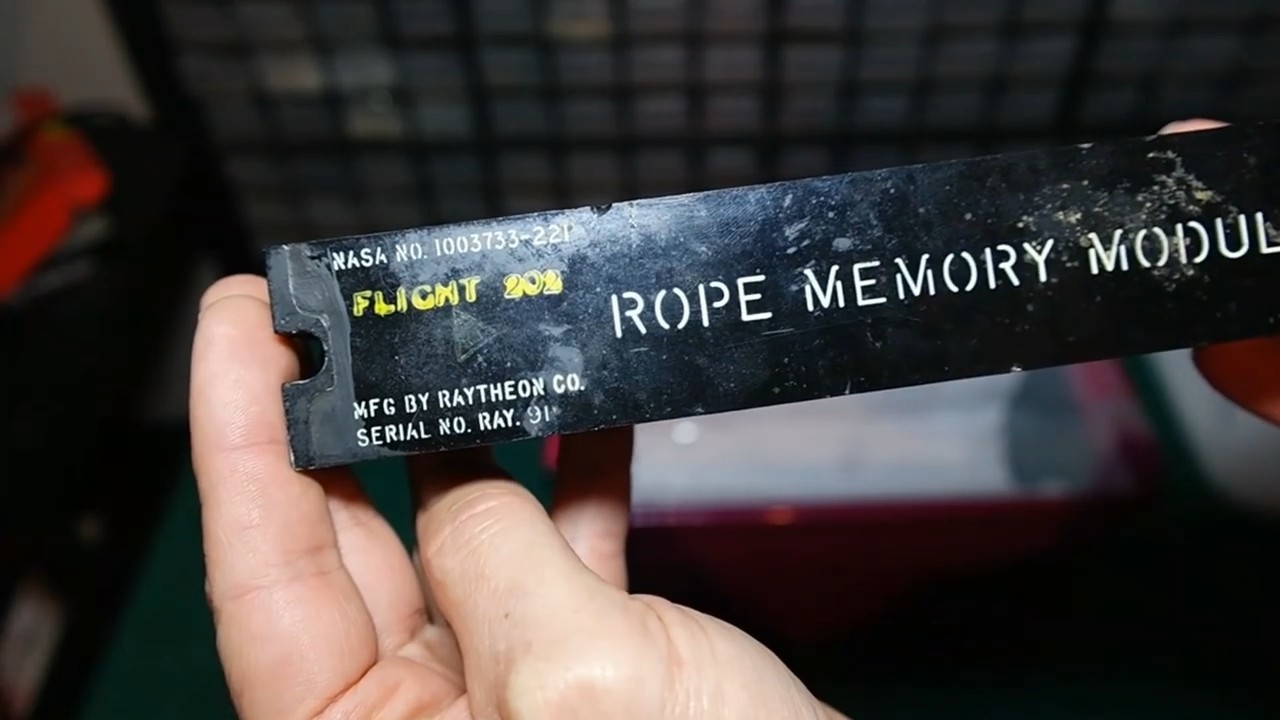
Permanent storage device. Shot from video: Francois Rautenbach
First of all, the engineer had to disassemble the base of a giant backplane mounted on the back of each memory module. Francois found documentation describing the layout of the findings, carefully studied the schemes - and managed to reverse engineer the interface, which has not been released for a long time.
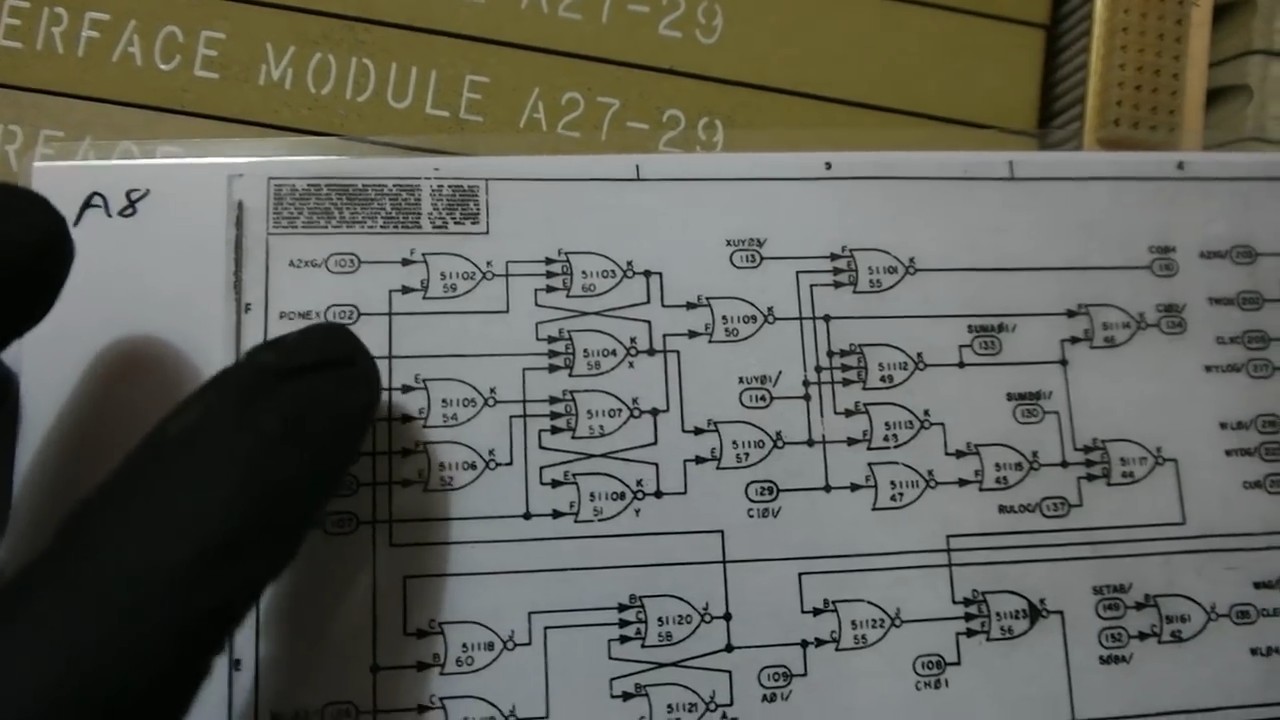
Documentation describing the pinout. Shot from video: Francois Rautenbach
At the next stage, he enlightened the module with an x-ray emitter in order to understand its internal structure. The engineer was assisted by a familiar cardiologist, Dirk Pretorius, at the local Gateway hospital, who provided access to the X-ray machine. The module was put on the couch for the patient - and enlightened.

ROM illumination by X-ray emitter. Shot from video: Francois Rautenbach
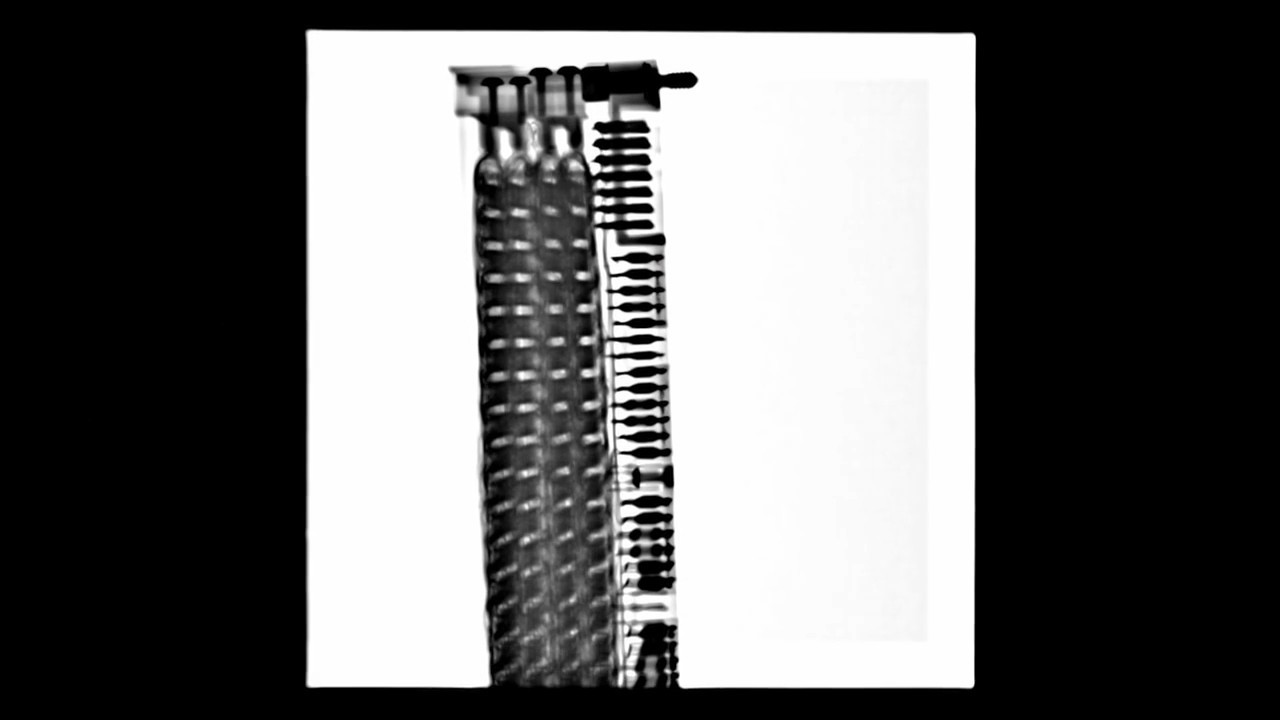
ROM illumination by X-ray emitter. Shot from video: Francois Rautenbach
Here you need to be very careful, because these modules are the only remaining media of the Apollo 3 software. Every bit that can be counted from there has the highest value and is a remarkable achievement of technological archeology.
According to the engineer, this is not just the first copy of a computer that was used in the Apollo program, but in general the first microcomputer in the world. It is far ahead of commercial microcomputers, such as the Datapoint 2200 manufactured by CTC (1970), Altair 8800 (1974), and others.
A copy of this artifact from AS-202 later flew to the lunar orbit on the Apollo 11 and controlled the descent of the lunar module.
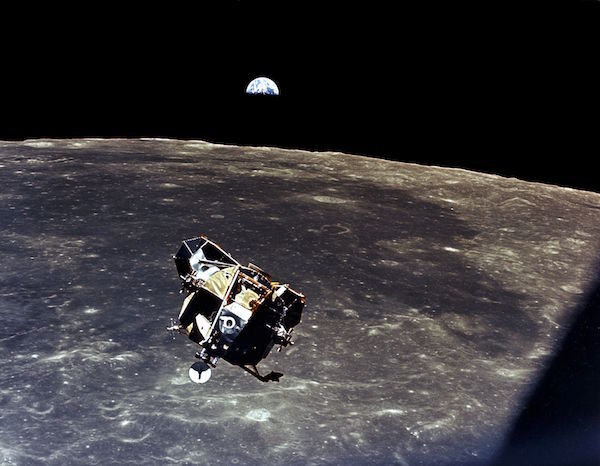
Lunar module of the Apollo spacecraft. Photo: NASA
The procedure for disassembling Francois filmed in detail on the video that he published on YouTube a few days ago.
Permanent storage device. Part 1. Introduction (9:03)
Permanent storage device. Part 2. Construction (8:53)
Onboard control computer of the Apollo spacecraft. External examination (6:12)
Probably, these first few episodes will not be the last, and Francois Rautenbach will continue research work.
The discovery of a South African engineer is undoubtedly one of the greatest discoveries of computer history made in the 21st century. All the more surprising that the humble Francois Rautenbach does not seek to attract attention. The publication of his videos on YouTube went completely unnoticed, and only a few days later they noticed her in the local media .
The history of the find is also interesting. According to the engineer, he became interested in lunar computers by reading the book by Frank O'Brien “ Apollo Computers. Leadership: Architecture and Operation , published in 2010. From this book, he learned that AGC was an extremely advanced and powerful computer, and began to look for additional materials on this topic.
Once a friend from Houston sent him photos of the trash that remained from the launch of AS-202 in 1966. In the photographs, he saw objects that very much resembled ROM modules from the onboard computer. The engineer studied the photos and documents on the AGC design - and realized that these are indeed the very memory modules that contain the program code from the first microcomputer in the history of mankind.
He calculated the source of the photos. It turned out that a certain person was trying to sell these modules and other modules of the Apollo computer at eBay, along with a three-ton pile of scrap metal that lay in the backyard of the house. But FBI agents came to him and asked him to explain where did he get these things. The man was able to find an invoice for the purchase of scrap metal, but took it off the auction. He did not want anyone in the United States to know about these details, so he turned to a buyer outside the country. “Being non-American is sometimes beneficial,” Rautenbach jokes.
Francois says he has long been interested in computer history. He was professionally engaged in the development of hardware and programming in various fields: from embedded software to highly secure systems, and recently engaged in payment systems. The spacecraft of the 1960s is far from the professional field of Francois, but experience in related areas of electronics and programming has allowed him to “sequentially” the historical find quite professionally.
Last year, an engineer flew to Houston - and made sure of the authenticity of the modules. After that, he paid for the delivery of scrap metal to South Africa and contacted Eldon Hall, one of the developers of the AGC computer and the author of the book “ Journey to the Moon. History of the onboard control computer of the Apollo spacecraft. ” With his help, the enthusiast found out that the computer itself with the AS-202, like other artifacts of the lunar program, is now stored on the legendary aircraft carrier USS Hornet, which was turned into a museum. But memory modules and other computer components were sold as garbage in 1976. And NASA did not have a single copy of the software from the first microcomputer.
If the South African engineer continues the job, then NASA experts and everyone else will soon be able to familiarize themselves with this unique piece of computer history. The publication of videos by Francois Rautenbach was timed to the 50th anniversary of the launch of AS-202.
The same seller, who visited the FBI, asked to keep his name secret.
Source: https://habr.com/ru/post/372631/
All Articles